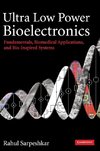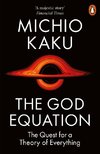
-
 Anglický jazyk
Anglický jazyk
Photoinduced Intramolecular Charge Transfer in Donor-Acceptor Biaryls and Resulting Applicational As
Autor: Michael Maus
This study is focused on the effects of photoinduced intramolecular charge transfer (CT) in three differently twisted donor-acceptor (D-A) biphenyls. Taking into account a further pair of differently twisted D-A biaryls new universal insights into the photoinduced... Viac o knihe
Na objednávku
30.33 €
bežná cena: 33.70 €
O knihe
This study is focused on the effects of photoinduced intramolecular charge transfer (CT) in three differently twisted donor-acceptor (D-A) biphenyls. Taking into account a further pair of differently twisted D-A biaryls new universal insights into the photoinduced electronic and conformation dynamics of D-A biaryls are obtained. Furthermore, possible applications in fields of solar energy conversion and fluorescence sensing of microenvironments are demonstrated.
Experimental means of stationary and time-resolved (ps to s) luminescence, transient absorption (sub-ps), polarization spectroscopy, high pressure and low temperature techniques are employed in conjunction with quantum chemical calculations.
Twist angle and solvent dependent electron transfer (ET) interactions between the D and A aryl moieties are responsible for the low lying and solvatochromic intramolecular CT electron band which gains unusually high intensity through strong electronic coupling of the pure 1ET with the ground (S0) and 1La state. As regards the class of biaryl compounds, for the first time, an excited state electron transfer from the D to the A could be monitored by dual spectrally separated stimulated fluorescence bands with precursor-successor relationship on a sub-ps timescale for the D-A biphenyls. It is concluded that, in additon to the electronic interaction of 1ET with S0 and 1La, the electronic interaction with a close lying 1Lb state plays a fundamental role in the ET dynamics and the 1CT-S0 transition probability in D-A biaryls.
The initial photoinduced conformational relaxation occurs towards planarity in all biaryls investigated. However, various results evidence that the highly twisted D-A biphenyl additionally performs a slow "excited state intramolecular back twist rotation" leading to a solvent polarity dependent conformational equilibrium between a more planar (CT) and a more twisted (CTR) conformer in S1(1CT). Using global analysis of the biexponential fluorescence decays as a function of temperature and pressure in medium polar solvents, the kinetics, thermodynamics, viscosity control and decomposed emission spectra associated with this adiabatic photoreaction are determined.
The twist angle dependent ability of the D-A biphenyls to serve as fluorescent probes of micropolarity, changes of microviscosity or matrix order, protic solvents and pH is investigated. In particular, fluorescence sensing of pH seems to be promising.
- Vydavateľstvo: Dissertation.Com
- Rok vydania: 1998
- Formát: Paperback
- Rozmer: 216 x 140 mm
- Jazyk: Anglický jazyk
- ISBN: 9781581120301











 Nemecký jazyk
Nemecký jazyk